Photographic equipment

Main Camera: QHY22
As main capture camera, the observatory is equipped with a QHY22, one of the firsts unit that came to Spain. Since Sony released the ICX694 sensor I found that had really good specs. Is a sensor with very little noise (of any type) and with excellent quantum efficiency (peak of 77% in the 550nm), as you can see in the following graph.
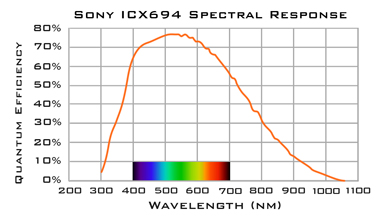
Its only problem is the small size of the pixels, which means that you need short focal instruments or use binning (losing resolution). Since the telescope I own has a considerable focal length, in my case I have to use binning; Certainly does not bother me at all, it may be inconvenient for artistic photography, but not for more scientifics works, it even offers certain advantages, such as the enormous increase in sensitivity and full well capacity, with only a very small increase in reading noise.
As can be seen in the following table (source: http://www.astrosurf.com/buil/isis/noise/result.htm) activating binning 2x2 in a camera with the same sensor (the Atik 460), this sensor reaches the maximum magnitude:
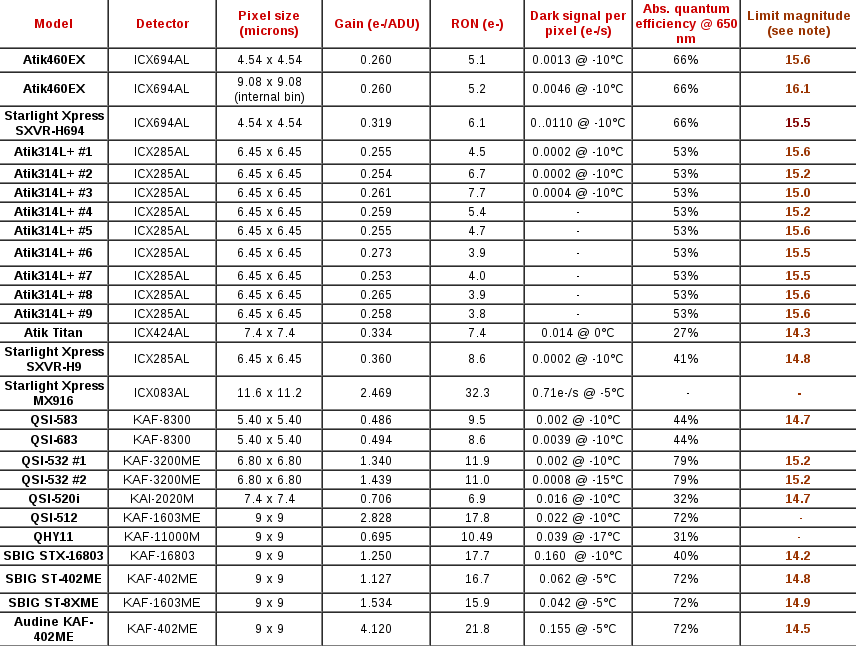
In my case, the unit I have, after exhaustively testing, offers a reading noise in 1x1 bin of 5.09 e (very similar to that offered by the Atik in the previous table), at a gain of 0.257 e/ADU, its full well capacity in bin 1x1 is 16857.87 (not wonderful, but it was expected considering the size of the pixels).
You can download here the spreadsheet that I used to perform all the measurements (for the curious, after the necessary calculations , the offset is set to 125 and the gain to 12).
In the above mentioned spreadsheet, you can also find the result of the linear response of the camera, both bin 1x1 and 2x2:
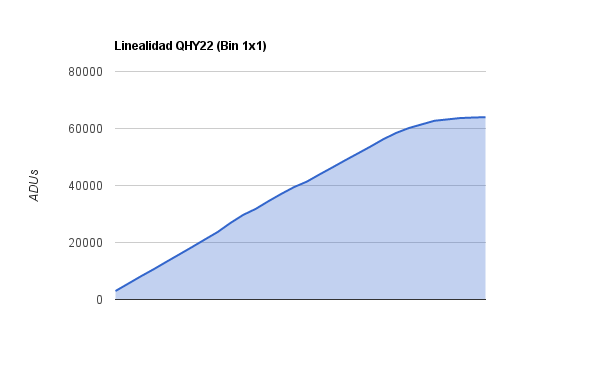
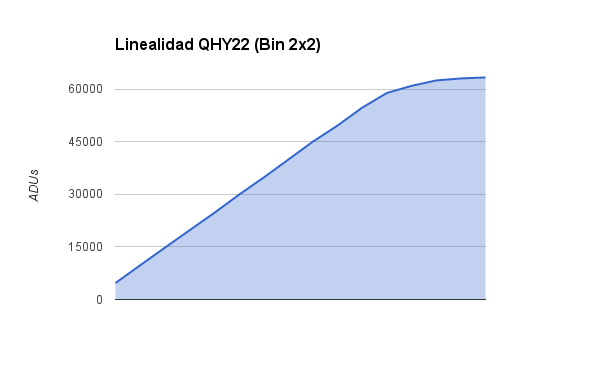
The result is that in bin 1x1 is perfectly linear up to 60000 accounts, and in bin 2x2 begins to lose linearity a little earlier, around 58,000 (very good).
As for the cooling power, it has a double stage Peltier, being able to offer up to 45 degrees under ambient temperature, I usually use it at -25ºC, temperature that reaches and maintains effortlessly at any time of the year.
If you want to know more about the ICX694 sensor and comparative with others, the two references that I show below may be interesting: http://blog.astrofotky.cz/pavelpech/?p=864 http://www.astrosurf.com/buil/isis/noise/result.htm
Guiding System: SXCCD Loderstar X2 and Off-Axis Guider
The camera I use for autoguiding (with an off-axis guider) is the Lodestar X2, based on Sony ICX 829 CCD sensor. It is a very sensitive camera, necessary when using an off-axis guide, offering stars in any field.
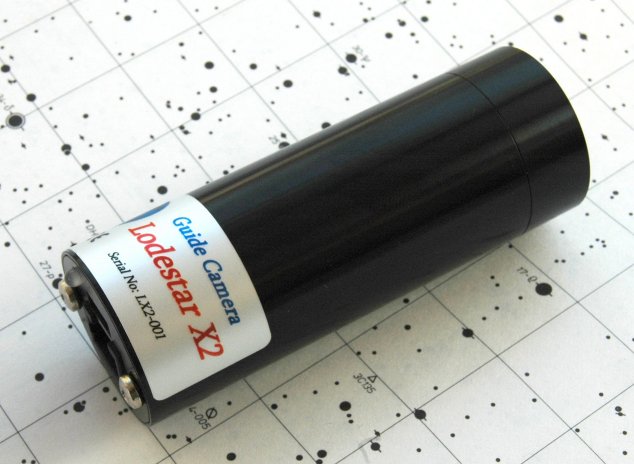
If you want more information about this camera and the OAG: Lodestar X2: http://www.sxccd.com/lodestar-x2-autoguider OAG: http://www.sxccd.com/sx-usb-filter-wheel
Filter Wheel and filters
As I mentioned before, the filter wheel is also from the same manufacturer, SXCCD, which allows excellent integration.

It incorporates the possibility of using 7 1.25" filters, at the moment it is equipped of the following filters: Filter Ha 3nm Astrodon (http://astrodon.com/store/p8/Astrodon_Narrowband_Filters.html). This is a very narrow band filter (3nm around 656.3 nm), especially useful in contaminated skies, where it achieves fantastic results (for some classic photography). * Filter ExoPlanet-BB (Blue Blocking) Astrodon (http://astrodon.com/store/p9/Exo-Planet_Filter.html)
-
This filter was designed based on the studies presented in the excellent book Exoplanet Observing for Amateurs by Bruce Gary (available for free) . It is a blue blocking filter, which I use to detect exoplanets transits.

- Star Analyzer SA-200 Diffraction Grating (http://www.rspec-astro.com/star-analyser-200/)
* Mounted on the wheel like a regular filter, it is allowing me to enter the fascinating world of spectroscopy.
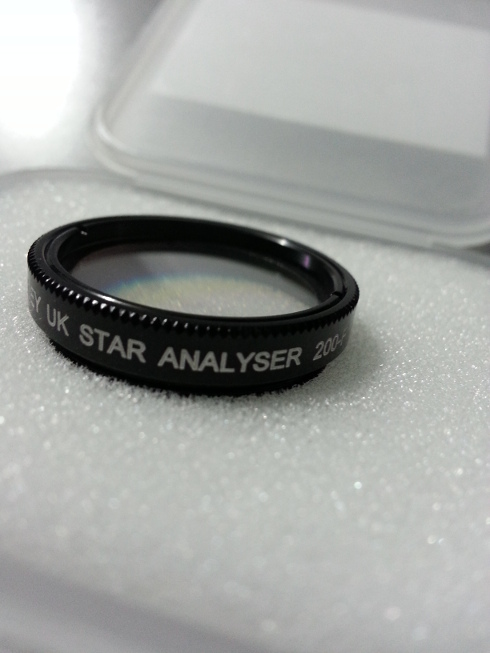
- Star Analyzer SA-200 Diffraction Grating (http://www.rspec-astro.com/star-analyser-200/)
* Mounted on the wheel like a regular filter, it is allowing me to enter the fascinating world of spectroscopy.
* Photometric filter Astrodon r' SLOAN (http://astrodon.com/store/p12/Astrodon_Photometrics_Sloan_Filters.html)
- Photometric filter r' SLOAN, for all the photometric tasks. For more information about the SXCCD wheel: * Filter wheel: http://www.sxccd.com/sx-usb-filter-wheel

